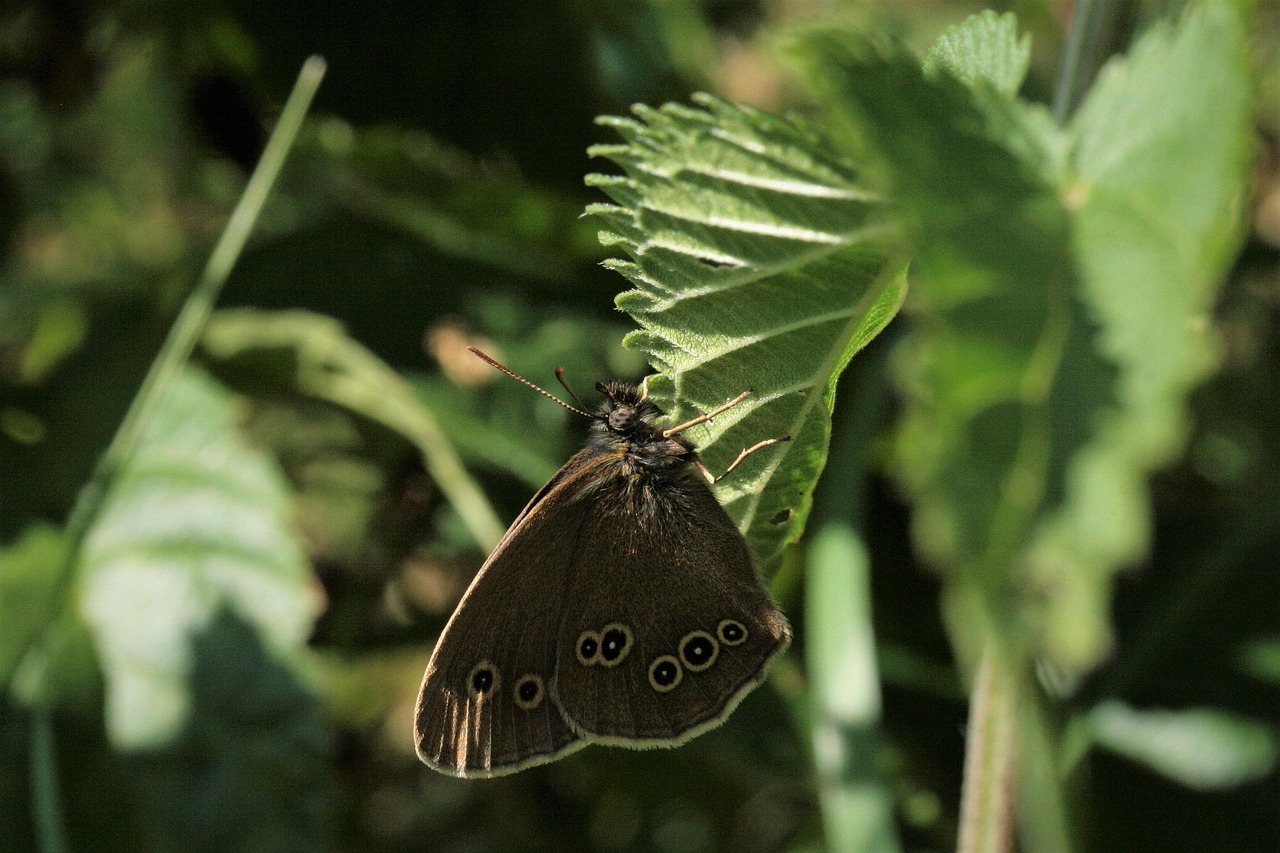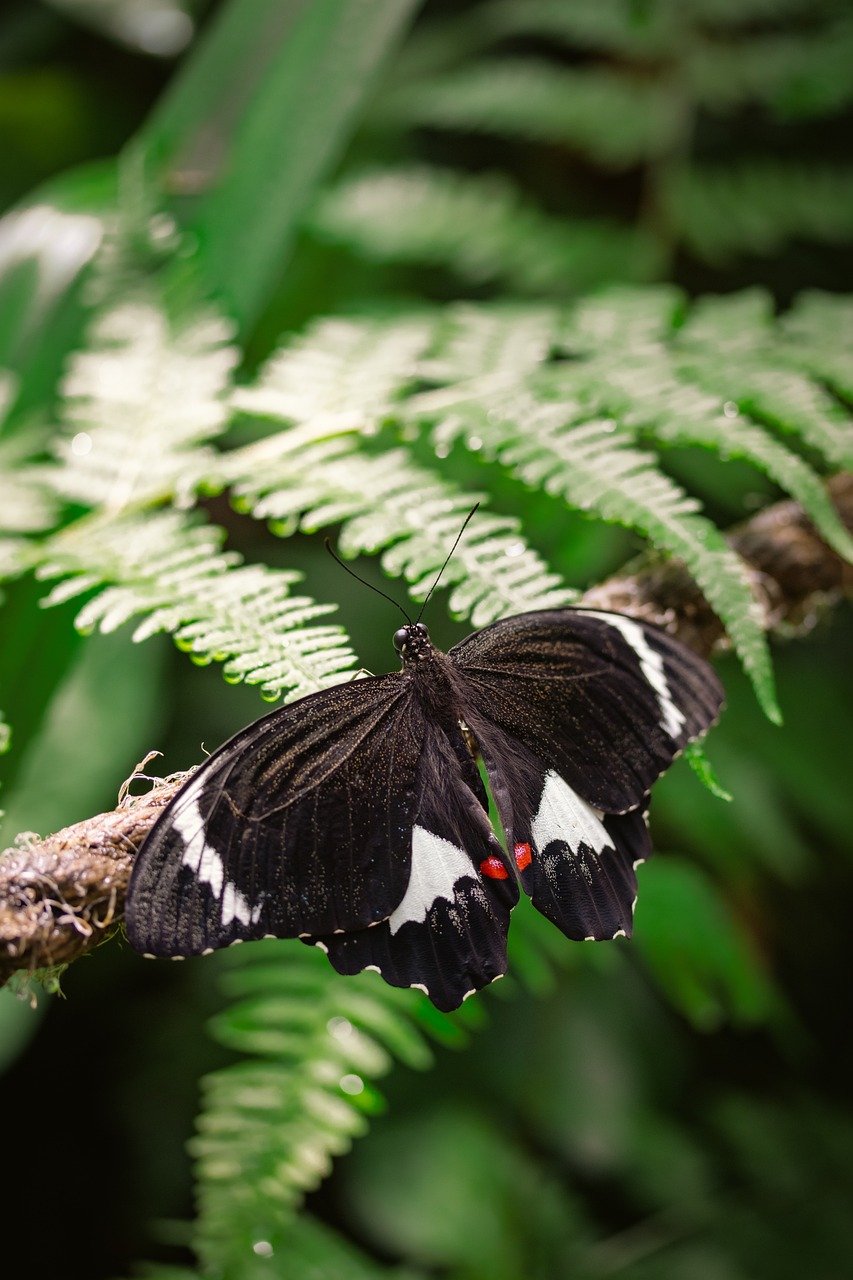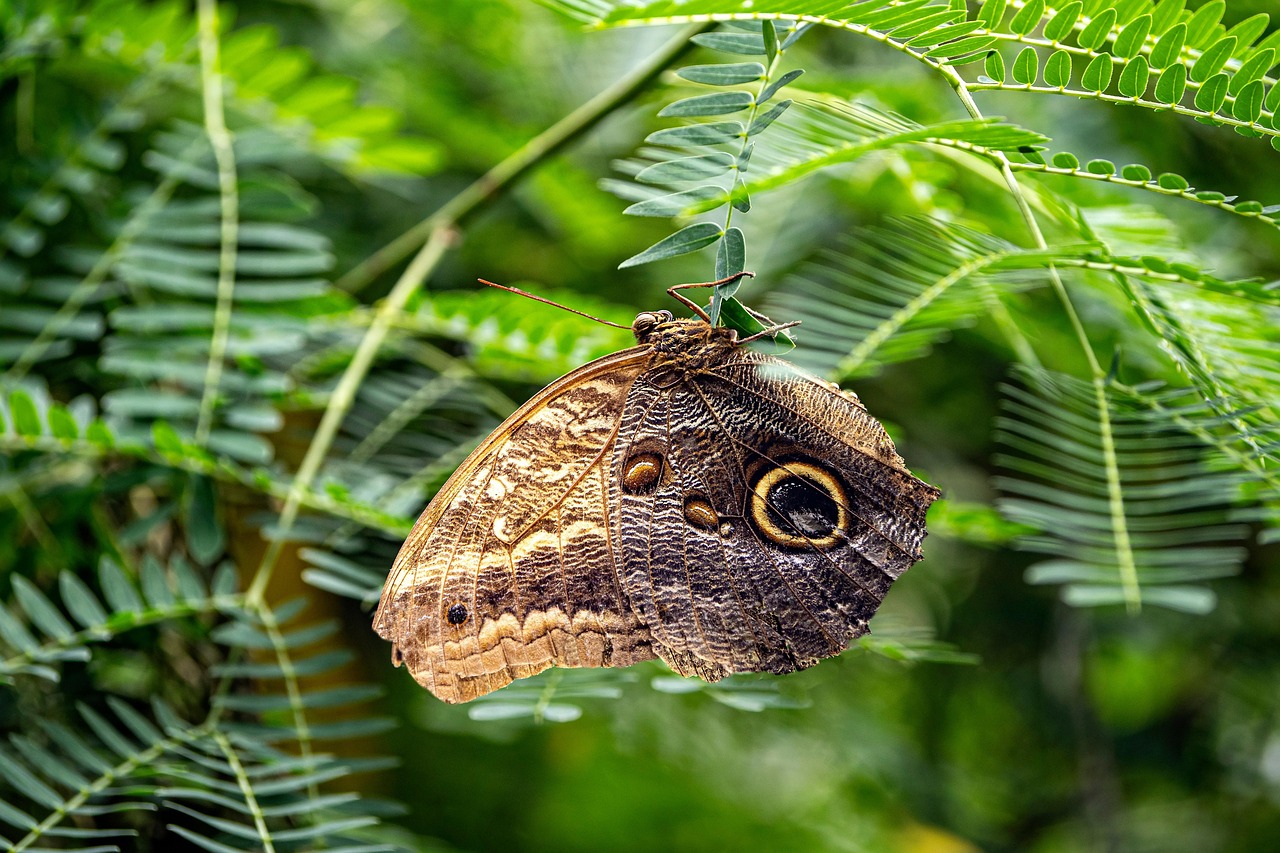Florida is home to a stunning array of butterfly species that grace gardens with their vibrant colors and delicate movements. For gardening enthusiasts, attracting these winged jewels can transform an ordinary garden into a dynamic ecosystem. Understanding the right plants to cultivate is essential for creating a haven for butterflies.
Butterflies play a crucial role in pollination, contributing to the health of our ecosystems. In Florida, the warm climate supports a variety of butterfly species throughout the year. However, to entice these beautiful insects, it is vital to plant species that serve as both nectar sources and host plants for caterpillars. By doing so, gardeners can ensure a continuous presence of butterflies in their outdoor spaces.

The ideal conditions for butterflies include sunny areas with shelter from harsh winds and rain. Incorporating native plants into your garden not only attracts butterflies but also supports local wildlife. Native plants have evolved alongside local species and provide the necessary resources for butterflies to thrive.
Essential Butterfly Plants in Florida
When selecting plants for your Florida garden, consider those that are known to attract specific butterfly species. Below is a list of popular butterfly-attracting plants that flourish in Florida’s climate:
- Milkweed (Asclepias spp.): Essential for monarch butterflies, milkweed serves as a host plant for their larvae.
- Passionflower (Passiflora spp.): This vine attracts zebra longwing butterflies and provides a habitat for their caterpillars.
- Butterfly Bush (Buddleja davidii): Known for its fragrant flowers, this bush attracts many butterfly species.
- Penta (Pentas lanceolata): A favorite nectar source for butterflies, especially during the warmer months.
- Gaillardia (Gaillardia pulchella): This hardy plant blooms brightly and is known to attract various butterflies.
Each of these plants provides essential benefits. Not only do they attract adult butterflies, but they also serve as food sources for caterpillars. This dual function is critical in maintaining butterfly populations.
Understanding Butterfly Life Cycles
To effectively attract butterflies, it is helpful to understand their life cycles. Butterflies undergo four distinct stages: egg, larva (caterpillar), pupa (chrysalis), and adult. Each stage has specific needs that can be met with the right plants in your garden. Here’s a brief overview:
| Stage | Description | Plant Needs |
|---|---|---|
| Egg | The female butterfly lays eggs on host plants. | Host plants for specific butterfly species. |
| Larva (Caterpillar) | The caterpillar hatches from the egg and feeds on the host plant. | High-nutrition host plants to support growth. |
| Pupa (Chrysalis) | The caterpillar transforms into a chrysalis, undergoing metamorphosis. | Safe and sheltered locations for pupation. |
| Adult | The fully developed butterfly emerges, seeking nectar from flowers. | Nectar-rich flowers for feeding. |
By providing the right environment for each stage of the butterfly life cycle, gardeners can create a flourishing habitat that supports these delicate creatures. This approach not only enhances your garden’s beauty but also contributes positively to the local ecosystem.
Incorporating these essential butterfly plants into your garden will not only attract stunning butterflies but also promote biodiversity. As you design your space, remember that every plant plays a role in this intricate web of life.
Creating the Ideal Butterfly Garden

To attract butterflies effectively, creating an ideal garden environment is essential. This involves careful planning and selection of plants, as well as considerations for sunlight, water, and shelter. Each element plays a significant role in attracting and sustaining butterfly populations.
Sunlight and Location
Butterflies are cold-blooded creatures that rely on the sun to regulate their body temperature. Therefore, choosing the right location for your garden is crucial. Here are some tips:
- Select a sunny spot: Aim for at least six hours of sunlight daily. Morning sun is especially important to warm the butterflies.
- Avoid heavy shade: Areas with too much shade can deter butterflies from visiting your garden.
- Provide shelter: Incorporate natural features like shrubs or trees that can offer protection from strong winds and heavy rains.
By ensuring that your garden has ample sunlight and some sheltered areas, you create an inviting atmosphere for butterflies to thrive.
Water Sources
Butterflies also need water to survive. Providing a source of moisture can enhance your garden’s appeal. Here are some effective ways to incorporate water into your butterfly garden:
- Shallow dishes: Use shallow bowls filled with sand and water. Butterflies can land safely while drinking.
- Misting systems: A gentle mist can provide humidity, especially on hot days, making the environment more comfortable for butterflies.
- Puddling areas: Create small puddles in your garden using moist soil or sand. Butterflies enjoy sipping from these areas.
These water sources not only benefit butterflies but also other pollinators and wildlife that visit your garden.
Choosing the Right Plants

When it comes to selecting plants, diversity is key. A variety of flowering plants will ensure that there are always blooms available throughout different seasons. Here are some plant categories to consider:
Nectar Plants
Nectar plants are essential for adult butterflies. They provide energy and sustenance. Some excellent nectar plants for Florida include:
- Swamp Milkweed (Asclepias incarnata): Attractive to monarchs and other butterflies.
- Lantana (Lantana camara): Known for attracting a variety of butterfly species.
- Verbena (Verbena bonariensis): A tall plant that offers clusters of small flowers.
Host Plants
Host plants are critical for caterpillars, as they provide the necessary food for growth. Incorporating host plants into your garden will support butterfly populations. Some notable host plants include:
- Florida Tree Nettle (Urtica chamaedryfolia): A host for several butterfly species.
- Fennel (Foeniculum vulgare): Attracts black swallowtail caterpillars.
- Citrus trees (Citrus spp.): Great for attracting giant swallowtails.
By planting both nectar and host plants, you create a balanced habitat that supports all life stages of butterflies.
Maintenance Tips for a Thriving Butterfly Garden
A successful butterfly garden requires regular maintenance to ensure it remains inviting and healthy. Here are some practical maintenance tips:
- Regular watering: Keep plants adequately watered, especially during dry spells.
- Pest management: Use organic methods to manage pests without harming butterflies.
- Deadheading flowers: Remove spent blooms to encourage new growth and extended blooming periods.
These simple maintenance practices will help maintain the vibrancy of your butterfly garden, making it a beautiful sanctuary for these enchanting creatures.

Attracting Specific Butterfly Species
Different butterfly species are attracted to various plants, so knowing which butterflies you want to attract can help guide your planting choices. Florida is home to many unique butterfly species, each with specific preferences for nectar and host plants. Understanding these preferences is essential for creating a butterfly garden that attracts your desired visitors.
Common Florida Butterflies
Here are some of the most common butterfly species found in Florida, along with their preferred plants:
- Monarch Butterfly (Danaus plexippus): Known for its striking orange and black wings, the monarch primarily feeds on milkweed (Asclepias spp.) and is attracted to nectar-rich flowers such as lantana and zinnias.
- Zebra Longwing (Heliconius charithonia): This butterfly has distinct black and yellow striped wings. It prefers passionflower vines (Passiflora spp.) as host plants and also feeds on nectar from pentas and verbena.
- Gulf Fritillary (Agraulis vanillae): Identified by its bright orange color with black spots, the Gulf fritillary thrives on passionflower vines and enjoys nectar from flowers like milkweed and flat-topped goldenrod.
- Swallowtail Butterflies: Species such as the Eastern Tiger Swallowtail (Papilio machaon) and the Giant Swallowtail (Papilio cresphontes) are attracted to plants like fennel, dill, and citrus trees.
By incorporating a variety of these plants into your garden, you can attract a diverse range of butterfly species, each contributing to the beauty and life of your garden.
Creating a Butterfly-Friendly Habitat
While selecting the right plants is crucial, creating a suitable habitat goes beyond planting. Here are some important factors to consider:
- Natural elements: Include rocks, logs, or other natural features in your garden. These elements provide resting spots for butterflies and can help create microclimates that attract them.
- Diversity of plants: Plant in clusters rather than single specimens. Butterflies are more likely to visit groups of flowers where they can easily find food.
- Avoid pesticides: Many common pesticides are harmful to butterflies and other beneficial insects. Opt for organic pest control methods to protect your garden’s ecosystem.
By focusing on these elements, you can create an inviting environment that supports not only butterflies but also other beneficial wildlife.
Seasonal Considerations for Your Butterfly Garden
Florida’s climate allows for year-round gardening, but different seasons can affect butterfly activity and plant growth. Understanding seasonal changes can help you maintain a thriving butterfly habitat throughout the year.
Spring and Summer
During spring and summer, butterfly activity peaks. Many butterfly species emerge during this time, and it is essential to have plenty of blooming plants available. Consider planting:
- Coreopsis (Coreopsis spp.): This native flower blooms profusely in spring and summer, attracting various butterflies.
- Aster (Aster spp.): Aster provides nectar late in the season, extending the food supply for butterflies during summer.
- Lantana: Its bright flowers bloom continuously, providing a consistent nectar source.
Fall and Winter
In fall, many butterflies prepare for migration or hibernation. While butterfly activity decreases, some will remain active in milder winter weather. To support butterflies during these cooler months, consider:
- Planting late-blooming species: Flowers like goldenrod and mistflower can provide food sources as temperatures cool.
- Providing shelter: Ensure there are sheltered areas where butterflies can find refuge during cold spells.
By planning your garden with seasonal changes in mind, you can create a habitat that remains supportive of butterflies throughout the year. This thoughtful approach enhances your garden’s ecological value while providing beauty and vitality to your outdoor space.
Creating a Sustainable Butterfly Habitat
To truly enhance your butterfly garden, consider implementing sustainable gardening practices. These practices not only benefit butterflies but also contribute to the overall health of the environment. Here are some sustainable gardening tips:
- Composting: Create a compost pile or bin to recycle kitchen scraps and yard waste. Compost enriches the soil, promoting healthy plant growth.
- Natural pest control: Introduce beneficial insects like ladybugs and lacewings to manage pest populations naturally. Avoid using chemical pesticides that can harm butterflies and their larvae.
- Rainwater harvesting: Collect rainwater in barrels to water your garden. This conserves water and provides plants with natural hydration free from chemicals.
By integrating these sustainable practices, you will create a healthier environment for butterflies and other wildlife, ensuring that your garden thrives year after year.
Encouraging Community Involvement
Creating a butterfly-friendly garden can also extend beyond your own yard. Engaging with neighbors and local community members can lead to larger conservation efforts. Here are some ways to encourage community involvement:
- Organize community planting days: Invite friends and neighbors to help plant butterfly gardens in local parks or community spaces.
- Educate others: Share information about butterfly gardening through workshops or community meetings. Educating others can increase awareness and interest in supporting butterflies.
- Create a butterfly trail: Collaborate with local organizations to establish a butterfly trail that connects multiple gardens, creating a corridor for butterflies to thrive.
By fostering community involvement, you can amplify the impact of your butterfly gardening efforts and inspire others to appreciate the beauty and importance of these remarkable insects.
Final Thoughts
Creating a butterfly garden in Florida is a rewarding endeavor that offers both beauty and ecological benefits. By understanding the needs of butterflies and incorporating suitable plants, you can attract these enchanting creatures to your outdoor space. Remember to focus on creating a diverse environment that includes both nectar and host plants, while also considering seasonal changes and sustainable practices.
As you embark on this gardening journey, take pride in knowing that your efforts contribute to the preservation of butterfly populations and the broader ecosystem. Each flower you plant plays a role in supporting these winged jewels, providing nourishment, habitat, and beauty to our world. Whether you are an experienced gardener or just starting out, every step taken towards creating a butterfly-friendly environment makes a difference.
In conclusion, the joy of witnessing butterflies fluttering through your garden is unparalleled. With thoughtful planning, maintenance, and community engagement, you can create a vibrant habitat that not only enhances your enjoyment of nature but also supports the delicate balance of life in Florida. Start today, and let your garden become a sanctuary for these beautiful creatures.
